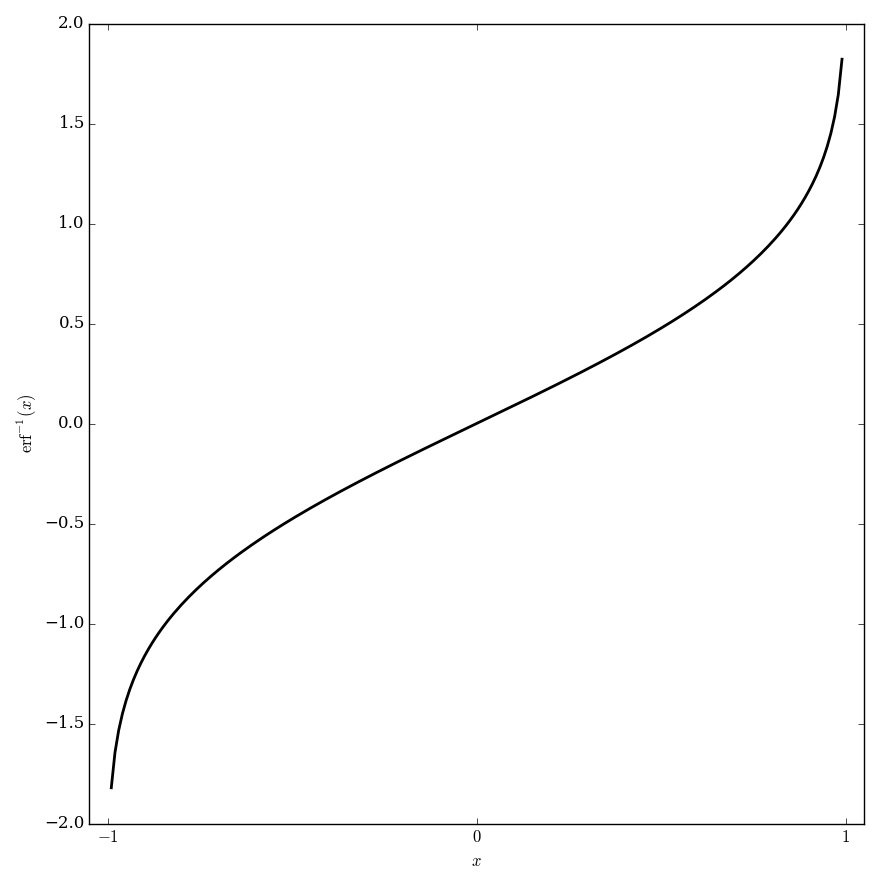Inverse error function
The inverse error function is the inverse function of the error function. We denote it by writing $\mathrm{erf}^{-1}$.
Properties
Theorem: The following formula holds: $$\dfrac{d}{dx} \mathrm{erf}^{-1}(x)=\dfrac{\sqrt{\pi}}{2}e^{[\mathrm{erf}^{-1}(x)]^2}.$$
Proof: █
Theorem: The following formula holds: $$\displaystyle\int \mathrm{erf}^{-1}(x) dx = -\dfrac{e^{-[\mathrm{erf}^{-1}(x)]^2}}{\sqrt{\pi}}.$$
Proof: █
Theorem: The following formula holds: $$\displaystyle\int_0^1 \mathrm{erf}^{-1}(x) dx=\dfrac{1}{\sqrt{\pi}}.$$
Proof: █
Theorem: The following formula holds: $$\displaystyle\int_0^1 \log(\mathrm{erf}^{-1}(x)) dx = \left( \dfrac{\gamma}{2} + \log(2) \right),$$ where $\mathrm{erf}^{-1}$ denotes the inverse error function, $\log$ denotes the logarithm, and $\gamma$ denotes the Euler-Mascheroni constant.
Proof: █
